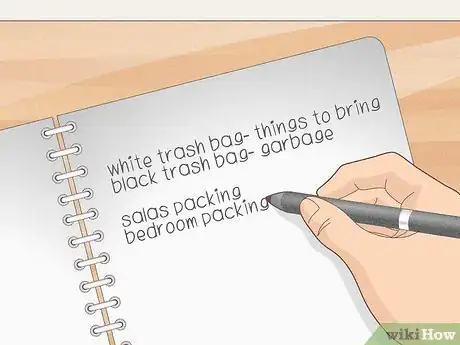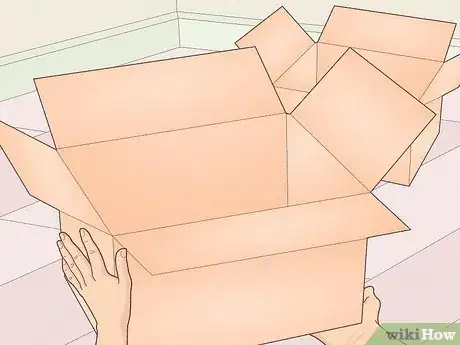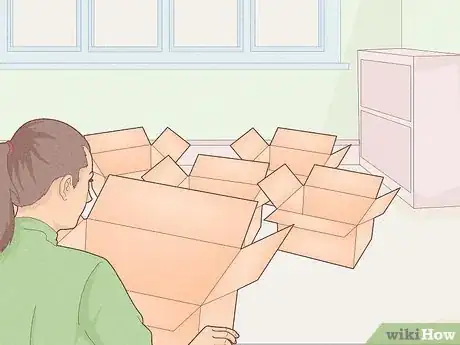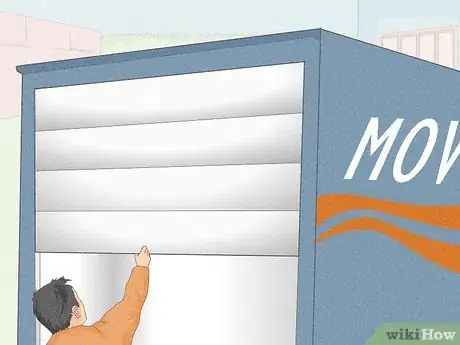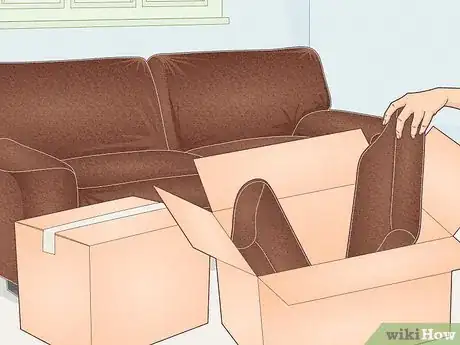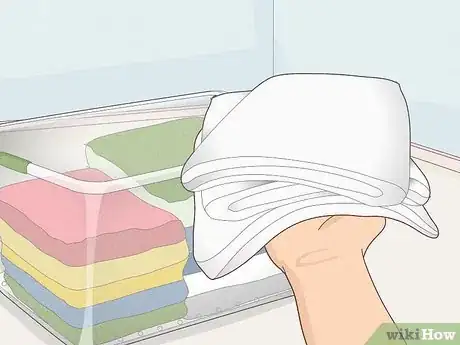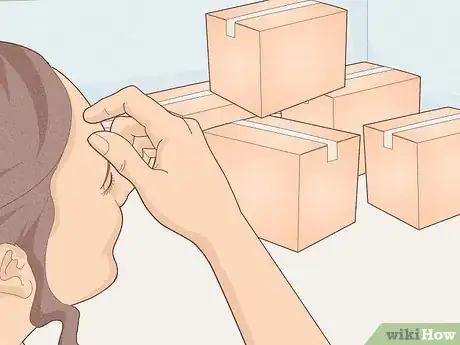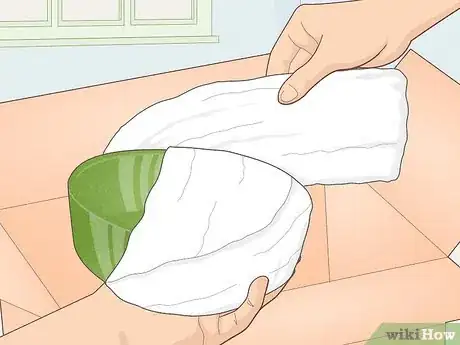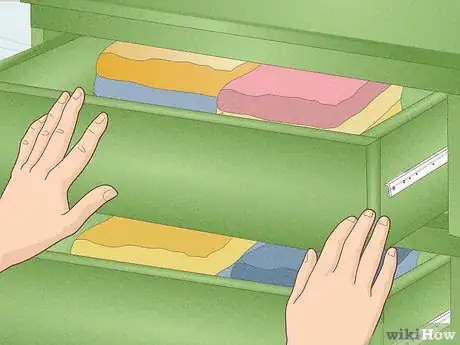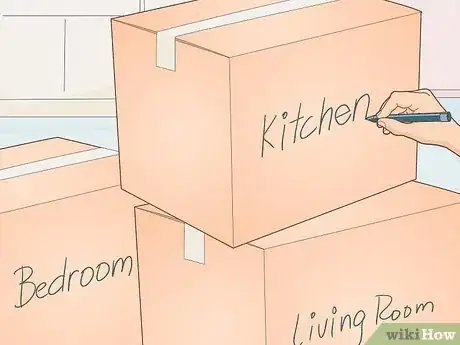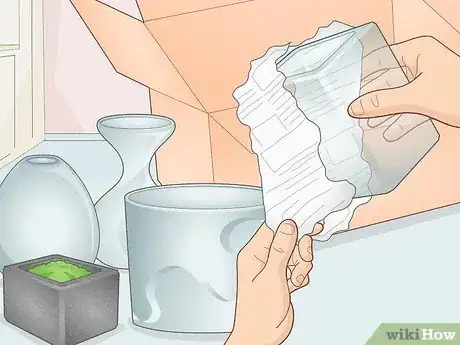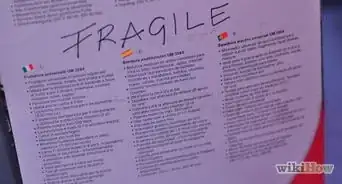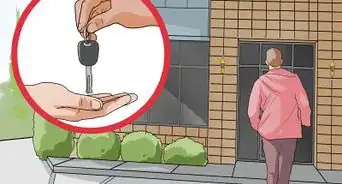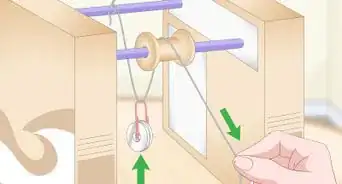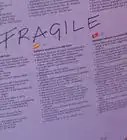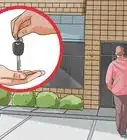This article was co-authored by Marty Stevens-Heebner, SMM-C, CPO® and by wikiHow staff writer, Amy Bobinger. Marty Stevens-Heebner was the first Certified Senior Move Manager (SMM-C) in the United States and is Founder and CEO of Clear Home Solutions, a move management and professional organizing company based in southern California. Marty is also a Certified Professional Organizer and a Certified Aging in Place Specialist (CAPS) through the National Association of Home Builders. She is the President-Elect and is on the board of directors of the National Association for Senior Move Managers, a member of the National Association of Professional Organizers, and has been acknowledged as a Hoarding Specialist and ADHD Specialist through the Institute for Challenging Disorganization.
There are 10 references cited in this article, which can be found at the bottom of the page.
This article has been viewed 148,815 times.
Moving is stressful enough in any situation, but it can feel downright chaotic if you find yourself needing to relocate in a hurry. First, take a few deep breaths and focus on making a plan—being organized will help the move go more smoothly, even if you don't have much time. Most of all, try not to stress too much. Before you know it, you'll be settling into your new place, making it feel like home.
Steps
Getting Organized
-
1Make a detailed to-do list of everything you need to do. You might just want to jump right into packing boxes, but if you don't have a plan, you might accidentally forget something important. To keep yourself on-task through the whole move, write down everything you need to remember to do. Cross off things as you accomplish them so it will be easy to see what you haven't gotten to yet.[1]
- Think about other ways you can organize your move, too. For example, you might use white trash bags for items you want to take with you, and black bags for garbage. That way, you won't accidentally throw away something you need—or accidentally bring trash to your new place.
-
2Collect boxes and other moving supplies. Your move will go more smoothly if you get all of your boxes and supplies together before you start packing. Stop by any store that sells office supplies to pick up things like packing tape, markers or labels for your boxes, and packing materials like bubble wrap or newspaper. If you don't want to buy boxes, try visiting liquor stores, grocery stores, and other shops in your area to see if they have any extras. Try to use things you already have on hand as packing supplies, as well.[2]
- For instance, trash bags are great for packing clothes in a hurry—just slide the bag over the clothes and wrap the handles around the hanger hooks. If the clothes are folded, just pile them in the bags!
- Sandwich bags are excellent for packing smaller items like jewelry, screws, makeup, and more.
- Pack clothes, books, and other smaller items in suitcases and duffle bags.
- If you don't have packing materials like bubble wrap or newspapers, use things like towels and blankets for wrapping breakable items.
Advertisement -
3Set up a specific packing station. Choose an out-of-the-way place where you can set up your packing supplies, like a corner of your living room or an empty bedroom you don't use often. Assemble your boxes ahead of time, then bring items to the packing station to box them up.[3]
- This is typically more efficient than moving your boxes, tape, and packing materials from room to room.
- If you find that going back and forth takes too long, you can put all of your packing materials in one box, then move that box and your packing boxes to each room as you pack it.
-
4Arrange for any vehicles or movers you'll be using. If you'll be using professional movers, contact them as soon as you know you're moving. If it's super short notice, you might have to contact several companies to find someone who's free on the day you need to move. If you're moving on your own, consider renting a truck if you don't have one—you can get a moving truck if you need to transport everything in one trip, but if you'll be moving locally, a pickup truck might do the trick.[4]
- You can also rent a transportable storage unit, which will give you the opportunity to pack at your own pace. The company will then move the pod to your new home when you're ready.
- If you can't take all of your belongings with you, rent a storage unit where you can store your things.
- It might help your move go faster if you rent a cart or dolly from a moving company so you can easily move large furniture and stacks of boxes.
-
5Ask family and friends if they can help. No matter how fast you go, there's only so much one person can do. If it's possible, reach out to your family and friends and ask them if they'd be available to help you move. Just keep in mind that you'll need to be responsible for organizing any help you have, so before moving day, try writing out a list of what tasks you want each person to help with.[5]
- For instance, you might ask one person to help you pack your dishes, while someone else could help you pack up your bedroom.
Packing Your Belongings
-
1Pack one room at a time. Working on one room at a time helps keep the packing process feel more manageable. It's also easier to stay organized, so you're less likely to end up scrambling to find your items.[6]
- For instance, you might start by packing your living area, then your kitchen, then your bedroom, and finally your bathroom.
- Pack similar items together. For example, pack first aid and medical supplies together in one box, and make sure to put all of your utensils in another box.[7]
- This will also make it easier to unpack, since everything that goes in the same vicinity will already be grouped together.
-
2Leave behind anything you don't want to keep. When you're moving in a hurry, try not to move things that you don't really need. You might not have time to sort through every single thing you own—that's totally fine! However, do take a little time to look around and see if there's anything on hand that you can donate, sell, or throw away to speed up the packing process. A good rule of thumb is that if you haven't used an item in the past 6 months, you probably don't need it.[8]
- Keep extra bags or boxes on hand for things you find that you want to donate, trash, or sell while you're packing.
- Sell your furniture and large appliances, if possible. You won't have to worry about moving it, and you can use the money to buy new things once you get to your new home.
- Remember, you can keep sorting through your items once you get into your new place, so don't stress too much if you need to just pack everything up and go.
-
3Set aside any essentials you'll need for the first few days. Use a suitcase, clothes hamper, or clear container to hold the things you'll need as you're settling into your new home. Fill it with a few changes of clothing, sheets, towels, toiletries, and anything else you think you might need.[9]
- You might also include things like paper plates, plastic forks, toilet paper, cleaning supplies, dish towels, and a simple tool kit in case you need to assemble anything when you get to your new place.[10]
-
4Don't worry too much about organizing boxes. In an ideal situation, you'd pack all of your like items together, but when you're packing up fast, it might take too much time. Put things into boxes or bags as you come across them, and focus more on protecting your fragile items than worrying about what's packed in which box. There will be time to organize everything when you unpack in your new space.
-
5Wrap fragile items so they don't get broken. To help protect your items during the move, wrap anything fragile in a padded material like bubble wrap. Or, for a cheaper option, wrap individual dishes in sheets of newspaper or packing paper, then fill in the gaps in the box with more balled-up paper.[11] In a pinch, you could even use clothes or towels to cushion your breakables.
- Don't leave open space in boxes containing fragile items. If the box shifts during the moves, the fragile objects could bump into each other and break.
-
6Leave folded clothes in dresser drawers so it will be easier to move them. There's no need to move all your clothes out of your dresser into boxes, only to transfer them back again after the move. Instead, save time by keeping your clothes in the dresser drawers. If you're concerned about drawers shifting open, try wrapping each drawer in plastic wrap to ensure nothing can fall out.
- In addition, when you're packing hanging clothes, it's easiest if you just leave them on the hangers! Either place them flat in the back of your vehicle, put them in garbage bags with the hangers sticking out, or stack them in wardrobe boxes.
-
7Label or color-code your boxes. As you fill each box, label it with the room that it will go into in your new home. If you're writing on the box, be sure to write on the top and at least two sides, so you'll be able to see the label from different angles.[12]
- Be sure to write "Fragile" on boxes containing breakable items. However, those boxes should still be packed protectively to avoid any accidental breaks.
-
8Unpack at your own pace once you're in your new home. Once the last box is off the truck, take a nice, deep breath—you've done it! Now, unpacking isn't exactly fun, but at least you don't have to feel rushed anymore. Everything you need right away should be available in the containers you set aside for your first night, so you have plenty of time to get settled into your new place.
- It's a good idea to unpack the same way you packed—going one room at a time. Try starting with your bedroom so you'll have a cozy place to sleep while you get the rest of your place set up!
Expert Q&A
-
QuestionHow do you move in a hurry?
 Marty Stevens-Heebner, SMM-C, CPO®Marty Stevens-Heebner was the first Certified Senior Move Manager (SMM-C) in the United States and is Founder and CEO of Clear Home Solutions, a move management and professional organizing company based in southern California. Marty is also a Certified Professional Organizer and a Certified Aging in Place Specialist (CAPS) through the National Association of Home Builders. She is the President-Elect and is on the board of directors of the National Association for Senior Move Managers, a member of the National Association of Professional Organizers, and has been acknowledged as a Hoarding Specialist and ADHD Specialist through the Institute for Challenging Disorganization.
Marty Stevens-Heebner, SMM-C, CPO®Marty Stevens-Heebner was the first Certified Senior Move Manager (SMM-C) in the United States and is Founder and CEO of Clear Home Solutions, a move management and professional organizing company based in southern California. Marty is also a Certified Professional Organizer and a Certified Aging in Place Specialist (CAPS) through the National Association of Home Builders. She is the President-Elect and is on the board of directors of the National Association for Senior Move Managers, a member of the National Association of Professional Organizers, and has been acknowledged as a Hoarding Specialist and ADHD Specialist through the Institute for Challenging Disorganization.
Professional Move Manager Make sure you have help. Identify the items that you will need immediately. That's the "open me first" box and probably a couple of other boxes, with towels, toiletries, your bed linen and other necessities. And also pack anything large. Generally speaking, your apartment or home doesn't fall off a cliff as soon as you move. You can go back to it for things. But if you need to go back for things, you want them to be small — things you can transport in your car.
Make sure you have help. Identify the items that you will need immediately. That's the "open me first" box and probably a couple of other boxes, with towels, toiletries, your bed linen and other necessities. And also pack anything large. Generally speaking, your apartment or home doesn't fall off a cliff as soon as you move. You can go back to it for things. But if you need to go back for things, you want them to be small — things you can transport in your car. -
QuestionWhat if I have to move the next day and I've barely packed?
 Community AnswerGet heavy duty contractor bags and put as much as you can in them. If your possessions are unlikely to break, just throw them in there. Grab and go!
Community AnswerGet heavy duty contractor bags and put as much as you can in them. If your possessions are unlikely to break, just throw them in there. Grab and go! -
QuestionWhat if I don't have a bag or a box and I move tomorrow?
 Community AnswerIf using a car, just take what you need, and if its clothing or the like, fold it as tightly and neatly as you can. Find something to hold small items, and wrap fragile things in blankets or towels. Big things may require assistance. If you have a moving van, most offer help with loading and unloading. It's also usually pretty cheap to get trash bags or cardboard boxes.
Community AnswerIf using a car, just take what you need, and if its clothing or the like, fold it as tightly and neatly as you can. Find something to hold small items, and wrap fragile things in blankets or towels. Big things may require assistance. If you have a moving van, most offer help with loading and unloading. It's also usually pretty cheap to get trash bags or cardboard boxes.
Things You'll Need
- Boxes
- Newspaper or other padding
- Tape
- Markers
- Labels or Sticky Notes (optional)
- Plastic wrap (optional)
References
- ↑ https://www.militaryfamily.org/8-fresh-ways-to-stay-organized-in-your-pcs-move/
- ↑ http://www.bbc.co.uk/homes/property/moving_packingtips.shtml
- ↑ https://www.denverpost.com/2013/08/30/home-design-pack-fast-move-fast-with-these-12-tips/
- ↑ https://www.realsimple.com/home-organizing/organizing/moving/12-steps-hiring-mover
- ↑ https://www.militaryfamily.org/8-fresh-ways-to-stay-organized-in-your-pcs-move/
- ↑ https://ahomefordesign.com/Blogpost/v1le/How-to-move-in-one-week--and-pack-your-house-in-7-hours
- ↑ http://www.bbc.co.uk/homes/property/moving_packingtips.shtml
- ↑ https://earlybirdmom.com/declutter-before-you-move/
- ↑ https://www.apartmenttherapy.com/moving-tips-36648151
- ↑ http://www.bbc.co.uk/homes/property/moving_packingtips.shtml
- ↑ https://www.denverpost.com/2013/08/30/home-design-pack-fast-move-fast-with-these-12-tips/
- ↑ https://www.apartmenttherapy.com/packing-and-planning-the-most-efficient-move-out-ever-235886
- ↑ https://www.denverpost.com/2013/08/30/home-design-pack-fast-move-fast-with-these-12-tips/
About This Article
Moving out of your home quickly can be stressful, but if you’re organized, the process will be much easier. Before you start, make sure you have everything you need, like moving boxes in a variety of sizes, packing tape, and packing material to protect your valuable items. Then, break your packing down into individual rooms and sections, and decide when you’re going to do each section. Pack any essentials you’ll need for your first few days in your new place in a separate bag so you can find them easily. If you can’t transport your things by yourself, rent a van, hire a moving company to help you, or ask a friend to borrow their truck. You can also rent storage pods in some areas, where the company drop off the pod, pick it up when you’re ready, and deliver it to your new home. For more tips from our Moving Manager, including how to ensure you get your security deposit back, read on!
